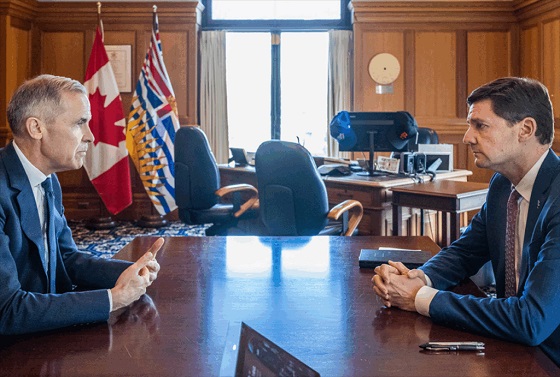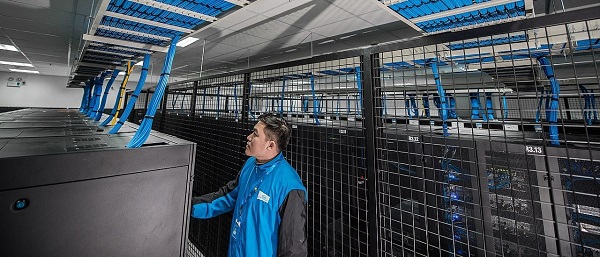Opinion
UK set to ban sex ed for young children amid parental backlash against LGBT indoctrination

From LifeSiteNews
There is undoubtedly a backlash against LGBT ideology unfolding in many Western countries, the source of which includes many ambivalent towards LGBT lifestyles but who are still uncomfortable teaching the ideology to children.
In March, podcaster Joe Rogan paid tribute to his favourite teacher. His seventh-grade science teacher, he noted, “was a brilliant man and he taught me about wonder. I think about that guy all the time.” But now, Rogan said, teachers are frequently fixating on issues of sex and gender. “I don’t want that gang of morons teaching my children about biological sex or gender,” Rogan said, adding that Drag Queen Story Hour is unacceptable for kids. “I don’t want you teaching them about any of those things.”
Instead, he suggested, teachers should focus on history, and math, and… all the things teachers used to focus on.
Rogan’s position on sex education is significant not only because he is the most popular podcaster in the world, but because he has achieved his success because he is a microcosm of the average adult. He is largely libertarian in the “live and let live” sort of way that saw a huge public opinion shift in favour of same-sex “marriage,” which Rogan supports; he is not religious; but he is still very uncomfortable with the full-scale sexualization of our education institutions and the insertion of gender ideology into public school curriculums across the board.
Rogan is something of a bellwether on these issues – he articulates the sort of common sense that many people hold but cannot articulate (or are too fearful to).
The “silent majority” is not a moral majority, but they are uncomfortable with the vast, swift social changes we have seen unfold over the past decade. Much of the backlash against gender ideology and increasingly explicit and instructional sex education in schools comes not from Christians – there are simply not enough of us – but from people who do not have moral objections to LGBT ideology, but do not want it taught to children. In short, most people are fine with adults doing whatever they want to, but they still believe that these behaviours and lifestyles are the purview of adults, not children.
That is why we are beginning to see government action on public school sex education even in the post-Christian United Kingdom. According to a recent BBC report, the U.K. government is planning to ban sex education for children under the age of ten, including a ban on any content about gender identity. Teachers’ unions, predictably, have pushed back, insisting that the proposed plan is “politically motivated” and that there has been no issue with inappropriate material. That claim is laughable; parents have been protesting the LGBT curriculum and other explicit materials for years now, and school staff have frequently responded by accusing them of various phobias.
According to the BBC, the “statutory guidance on relationships, sex and health education (RSHE) – which schools must follow by law – is currently under review. The government believes clearer guidance will provide support for teachers and reassurance for parents and will set out which topics should be taught to pupils at what age.” Sex education is not “typically taught until Year 6,” when children are 10, and “parents already have the right to withdraw” their child, although this has proven difficult to do.
Sex education has been mandatory for older students since September 2020, and the “government strongly encourages schools to include teaching about different types of family and same-sex relationships.”
This curriculum – referred to as “relationships education” – is compulsory and parents cannot remove their children.
The BBC notes that parents have been demanding changes in order to protect the innocence of children, while educators are insisting that the content is necessary because children are exposed to this information online anyway and that it is important for “trusted adults” to contextualize that information. That is the crux of the issue here that few are openly addressing: educators want to “contextualize” this information from the perspective of a pro-LGBT worldview, while many parents do not want this material taught at all because they fundamentally disapprove of the LGBT ideology itself.
There is undoubtedly a backlash against LGBT ideology unfolding in many Western countries, but it is important to recognize the source of that backlash. Although Christians and other religious objectors are certainly part of that backlash, their numbers are not large enough, in most places, to force government action.
The growing discomfort we see in polling data is thus far more likely to be of the Joe Rogan variety – we should live and let live, but we should also let kids be kids. As the U.K. government’s proposed guidance highlights, this means that there will be changes, but not significant ones.
LGBT ideology will still be compulsory for later grades, and state schools will still be teaching state dogmas.
Crime
‘Modern-Day Escobar’: U.S. Says Former Canadian Olympian Ran Cocaine Pipeline with Cartel Protection and a Corrupt Toronto Lawyer

Ryan Wedding, believed to be hiding in Mexico, is on the FBI’s Ten Most Wanted Fugitives list. The State Department reward is up to $15 million for information leading to his arrest.
The U.S. government has unsealed fresh criminal charges and sweeping financial sanctions against former Canadian Olympic snowboarder Ryan James Wedding, alleging that he orchestrated the importation of up to 60 metric tonnes of cocaine a year into the United States and Canada, relied on a Toronto lawyer who, according to the U.S. Treasury, “has also helped Wedding with bribery and murder,” and, while under the protection of a former Mexican law-enforcement officer with ties to senior Mexican police officials, ordered dozens of sophisticated assassinations across Canada, Latin America and the United States — including the execution of a federal witness in Colombia, according to U.S. government filings.
According to Attorney General Pam Bondi, “Wedding controls one of the most prolific and violent drug trafficking organizations in this world,” working “closely with the Sinaloa Cartel, a foreign terrorist organization, to flood not only American but also Canadian communities with cocaine.” Bondi said Wedding’s organization is responsible for moving multi-ton quantities of cocaine each year through Mexico into Los Angeles, before the drugs are shipped onward to Canadian and U.S. cities in long-haul semi-trucks.
As reported by The Bureau, these trucks and routes are controlled by Indo-Canadian crime networks. The U.S. government says that a Toronto lawyer, Deepak Balwant Paradkar, “introduced Wedding to the drug traffickers that have been moving Wedding’s cocaine and has also helped Wedding with bribery and murder.”

FBI Director Kash Patel likened Wedding to a “modern-day iteration” of Pablo Escobar and Joaquin “El Chapo” Guzmán and said Wedding is responsible for “engineering a narco-trafficking and narco-terrorism program that we have not seen in a long time.”
The Justice Department and FBI say Wedding, who competed for Canada at the 2002 Winter Olympics in Salt Lake City, now heads a billion-dollar-a-year narcotics enterprise that engages in cocaine trafficking, contract killings and intimidation across the United States, Canada and Latin America. Another target named along with Wedding is a former Italian special-forces soldier who helps the network with training, according to the U.S. government.
Wedding is believed to be hiding in Mexico and remains on the FBI’s Ten Most Wanted Fugitives list, with the State Department increasing its reward to up to $15 million for information leading to his arrest.
Prosecutors say the new indictment centres on the January 31, 2025, murder of a federal witness in Medellín, Colombia. According to U.S. Attorney Bill Essayli of the Central District of California, Wedding “placed a bounty on the victim’s head in the erroneous belief that the victim’s death would result in the dismissal of criminal charges against him and his international drug trafficking ring and would further ensure that he was not extradited to the United States.” The victim was shot five times in the head while dining at a restaurant in Medellín and died instantly, Essayli said.
Justice Department filings and officials at today’s Washington news conference allege that Wedding and his associates used a fake gangland “news” site, The Dirty News, as part of the plot. The indictment states that co-accused Gursewak Singh Bal, a Mississauga man described as co-founder and co-operator of The Dirty News, agreed — “in exchange for payment” — not to post negative material about Wedding and instead published a photograph of the cooperating witness so that he “could be hunted down and killed.” Essayli said the site was seized pursuant to a federal warrant and is no longer online.
Ten defendants were arrested Tuesday in Colombia, Florida, Québec and Ontario. In a parallel move, the U.S. Treasury Department’s Office of Foreign Assets Control announced sanctions against Wedding and nine individuals plus nine entities, effectively cutting them off from the American financial system.
Treasury describes Wedding as “an extremely violent criminal believed to be responsible for the murder of numerous people abroad, including U.S. citizens,” who “continues to direct drug trafficking, murder, and other serious criminal activities” from Mexico while on the run. The sanctions designation outlines a trans-Atlantic laundering system that moves proceeds through cryptocurrency, high-end cars and motorcycles, and front companies on three continents.

Among those named by Treasury:
Edgar Aaron Vázquez Alvarado, a former Mexican law-enforcement officer known as “the General,” who allegedly uses sources within Mexican police agencies to locate targets for Wedding and owns fuel-sector companies in Mexico;
Miryam Andrea Castillo Moreno, Wedding’s wife, accused of laundering his drug proceeds and assisting in acts of violence;
Carmen Yelinet Valoyes Florez, a Colombian running a high-end prostitution ring in Mexico who allegedly assisted with the murder of a federal witness;
Daniela Alejandra Acuña Macias, a Colombian national described as Wedding’s girlfriend, accused of collecting hundreds of thousands of dollars from him and helping obtain intelligence on rivals;
Deepak Balwant Paradkar, the Canadian attorney who Treasury says provided “illegal services” beyond a normal lawyer-client relationship, including introducing Wedding to key traffickers, helping with bribery and murder, and allowing Wedding to eavesdrop on privileged calls with other clients he allegedly wanted to kill;
Rolan Sokolovski, a Toronto jeweler who Treasury alleges laundered millions through his “Diamond Tsar” business and cryptocurrency transfers; and
Gianluca Tiepolo, an Italian former special-forces member who allegedly helped Wedding park his money in exotic vehicles and ran tactical training camps for hitmen.
According to Treasury, Paradkar “introduced Wedding to the drug traffickers that have been moving Wedding’s cocaine and has also helped Wedding with bribery and murder,” in exchange for luxury watches and additional fees. Vázquez and his Mexico-based fuel firms, Sokolovski’s jewelry company, and a series of Italian and U.K. vehicle and motorcycle dealers tied to Tiepolo have all been designated under Executive Order 14059 as part of Wedding’s laundering apparatus.
At the Washington news conference, Royal Canadian Mounted Police Commissioner Mike Duheme emphasized the role of cross-border cooperation, saying: “International cooperation, such as our involvement in Operation Giant Slalom, is vital to our ability to stay ahead of organized crime.”
But that message of seamless cooperation contrasts with what senior U.S. law-enforcement officials were saying privately months ago.
As The Bureau previously reported, a senior U.S. source insisted there has been a troubling lack of RCMP collaboration in probing Wedding’s networks. Not only did the RCMP allegedly stonewall Drug Enforcement Administration requests six years ago to crack down on Canadian trucking routes tied to Wedding’s shipments through the United States, the source said, but there was also a lack of cooperation in targeting his violent cells inside Canada — where associates, competitors, and even an innocent Indo-Canadian family in Caledon, Ontario, mistakenly linked to a trucker from Wedding’s network, were brutally executed.
“We tried to work with RCMP on Wedding too, and they said, ‘No,’” a source aware of probes from three separate U.S. agencies said. “And it’s like — he’s killing Canadian citizens. He’s killed God knows how many. And you still don’t want to cooperate because of whatever grievance. But the RCMP threw up roadblocks. You’ve got to get past those things because Canadians are dying.”
More to come on this breaking story.
The Bureau is a reader-supported publication.
To receive new posts and support my work, consider becoming a free or paid subscriber.
Alberta
Carney government’s anti-oil sentiment no longer in doubt

From the Fraser Institute
The Carney government, which on Monday survived a confidence vote in Parliament by the skin of its teeth, recently released a “second tranche of nation-building projects” blessed by the Major Projects Office. To have a chance to survive Canada’s otherwise oppressive regulatory gauntlet, projects must get on this Caesar-like-thumbs-up-thumbs-down list.
The first tranche of major projects released in September included no new oil pipelines but pertained largely to natural gas, nuclear power, mineral production, etc. The absence of proposed oil pipelines was not surprising, as Ottawa’s regulatory barricade on oil production means no sane private company would propose such a project. (The first tranche carries a price tag of $60 billion in government/private-sector spending.)
Now, the second tranche of projects also includes not a whiff of support for oil production, transport and export to non-U.S. markets. Again, not surprising as the prime minister has done nothing to lift the existing regulatory blockade on oil transport out of Alberta.
So, what’s on the latest list?
There’s a “conservation corridor” for British Columbia and Yukon; more LNG projects (both in B.C.); more mineral projects (nickel, graphite, tungsten—all electric vehicle battery constituents); and still more transmission for “clean energy”—again, mostly in B.C. And Nunavut comes out ahead with a new hydro project to power Iqaluit. (The second tranche carries a price tag of $58 billion in government/private-sector spending.)
No doubt many of these projects are worthy endeavours that shouldn’t require the imprimatur of the “Major Projects Office” to see the light of day, and merit development in the old-fashioned Canadian process where private-sector firms propose a project to Canada’s environmental regulators, get necessary and sufficient safety approval, and then build things.
However, new pipeline projects from Alberta would also easily stand on their own feet in that older regulatory regime based on necessary and sufficient safety approval, without the Carney government additionally deciding what is—or is not—important to the government, as opposed to the market, and without provincial governments and First Nations erecting endless barriers.
Regardless of how you value the various projects on the first two tranches, the second tranche makes it crystal clear (if it wasn’t already) that the Carney government will follow (or double down) on the Trudeau government’s plan to constrain oil production in Canada, particularly products derived from Alberta’s oilsands. There’s nary a mention that these products even exist in the government’s latest announcement, despite the fact that the oilsands are the world’s fourth-largest proven reserve of oil. This comes on the heels on the Carney government’s first proposed budget, which also reified the government’s fixation to extinguish greenhouse gas emissions in Canada, continue on the path to “net-zero 2050” and retain Canada’s all-EV new car future beginning in 2036.
It’s clear, at this point, that the Carney government is committed to the policies of the previous Liberal government, has little interest in harnessing the economic value of Canada’s oil holdings nor the potential global influence Canada might exert by exporting its oil products to Asia, Europe and other points abroad. This policy fixation will come at a significant cost to future generations of Canadians.
-
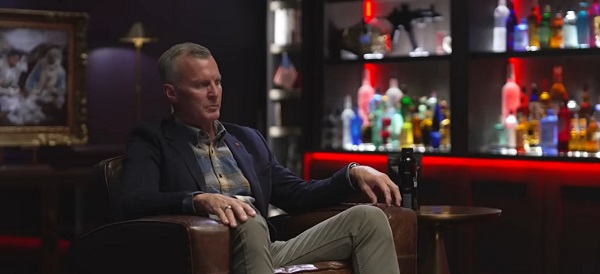
 Daily Caller2 days ago
Daily Caller2 days ago‘Holy Sh*t!’: Podcaster Aghast As Charlie Kirk’s Security Leader Reads Texts He Allegedly Sent University Police
-

 Great Reset2 days ago
Great Reset2 days agoCanadian government forcing doctors to promote euthanasia to patients: report
-

 Crime2 hours ago
Crime2 hours ago‘Modern-Day Escobar’: U.S. Says Former Canadian Olympian Ran Cocaine Pipeline with Cartel Protection and a Corrupt Toronto Lawyer
-

 Alberta2 days ago
Alberta2 days agoSylvan Lake football coach fired for opposing transgender ideology elected to town council
-
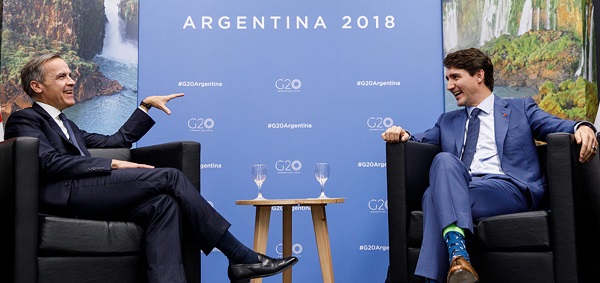
 Carbon Tax1 day ago
Carbon Tax1 day agoCarney fails to undo Trudeau’s devastating energy policies
-

 Health1 day ago
Health1 day agoNEW STUDY: Infant Vaccine “Intensity” Strongly Predicts Autism Rates Worldwide
-
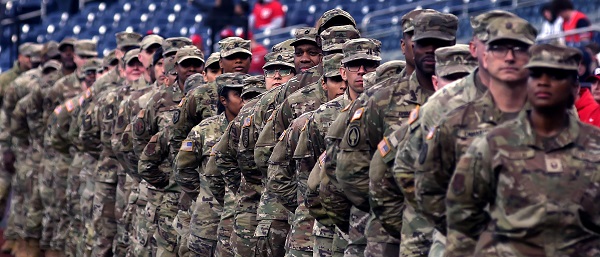
 Daily Caller14 hours ago
Daily Caller14 hours agoDemocrats Explicitly Tell Spy Agencies, Military To Disobey Trump
-

 Alberta1 day ago
Alberta1 day agoEdmonton and Red Deer to Host 2027 IIHF World Junior Hockey Championship




